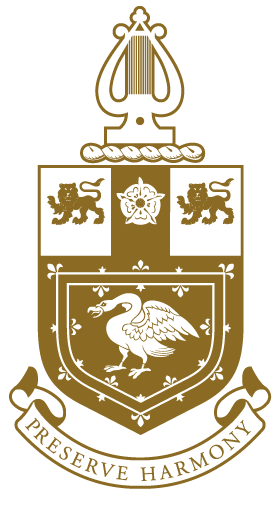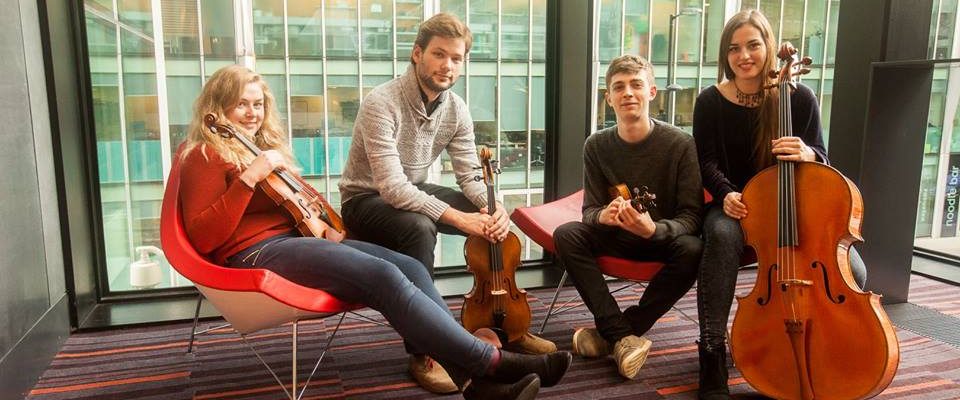Young Artist Interview: Breaking down barriers to music-making – Ghislaine Reece-Trapp
Getting people interested in playing music involves exposing them to instruments they can try. But when the instrument commonly sits within cathedrals, making it widely accessible can be challenging. Here Musicians’ Company Yeoman Ghislaine Reece-Trapp talks about her love for the organ and how she’s helping more people ‘give it a go’.
“I’d love to get more people interested in the organ,” says Ghislaine, who was first introduced to the organ through her local church. “I started singing in the church choir at the age of four and learnt the piano at eight. One day after choir practice the church organist asked if I would like organ lessons and it just took off from there.” Ghislaine is now an academic music teacher, Head of Organ and Director of the Girls’ Chapel Choir at Highgate School, and the recipient of a long list of awards.
Access to the organ has always been limited. Often the preserve of Cathedral schools and places of worship, few schools offer the organ as an option. There is also a notable gender imbalance within the profession – over 90% of Director of Music and Assistant Organist positions in the UK are held by men. Ghislaine’s role as Co-Chair of the newly formed Society of Women Organists (SWO) alongside Anne Masden Thomas MBE aims to redress this imbalance by showcasing and celebrating the talent of female amateur and professional organists. The society will also provide recital opportunities and a website where people can easily find and hire a female organist for any event.
“I know from personal experience just how important positive role models are for change, and hope my work and that of SWO will help to promote and accelerate the musical progression of female organists. As a teenager, I encountered many inspirational women organists from across the country on the ‘Oundle for Organists’ summer courses. It was there, at the age of fourteen, that I was tutored by Sarah MacDonald and Sarah Baldock, the first professional female Cathedral musicians I had met. Four years later, I had the fortune to work with Katherine Dienes-Williams at Guildford Cathedral as Organ Scholar. My grandmother was also an organist, largely out of a need for someone to accompany the congregation’s hymn-singing at her local church. All these experiences had a powerful impact on my confidence.
Many people understandably think of the organ and piano as being very similar instruments, as they both feature a keyboard and involve hand-eye coordination. In reality, however, they are extremely different. Few professional pianists work as professional organists, and vice versa. While the piano uses touch to alter the timbre, the organ relies upon changes of the stops and use of boxes controlled by the feet to create crescendos and diminuendos. Furthermore, each organ has a completely different set of stops – some organs are designed to perform German Baroque music, some French Romantic music, while others aim to combine a number of historical periods and countries in the stops that they offer. In this sense, the organ is like an orchestra, where you can select your own combination of instruments to best bring to life the style of the piece you are playing. Add in the considerations of acoustic, balance between the parts (which may depend upon where your audience is sitting within the building), time delay between different parts of the organ, and varied keyboard actions, and you need to be really creative when performing on the organ.
The vast differences between organs across the country has meant that preparing for recitals has sometimes been more exciting than expected. Once, having arranged organ practice for a recital, I discovered that the manuals and pedal board had five more semitones on the left-hand side of the console, and far fewer on the right-hand side, than on most organs. Thinking outside of the box, I ended up using brown paper to cover the extra keys on my left in order that I could pretend they were part of the wooden case. On another amusing occasion I found myself playing an organ with a one-octave pedal board, rather than the usual two and a half. The virtuosic pedal solo at the beginning of my piece, designed to show off the enormous pedal board, sounded rather peculiar within such a limited range.
I also compose for choir – something I’ve been doing since school, but have focused on more since teaching full-time. I was a finalist in the BBC Radio 3 Carol of the Year Composition Competition 2016, and the Northern Ireland International Composition Competition 2016. I also recently published ‘Alleluia! A new work is come on hand’, a composition for SATB choir, with the Royal School of Church Music (RSCM). This exposure has led to a run of commissions. I’m currently in my composition season (I divide the year into composition and recitals) and so far this month, I’ve had a commission by the RSCM and have been to Edinburgh for the premiere of my Jubilate Deo, a commissioned anthem I wrote for St Peter’s’ Episcopal Church in memory of a choir member. I’m also writing a song cycle for mezzo-soprano Katie Bray – a true talent and artist to watch.”
You can find out more about Ghislaine on her Yeoman profile page.
Interview by @suzywillmott





